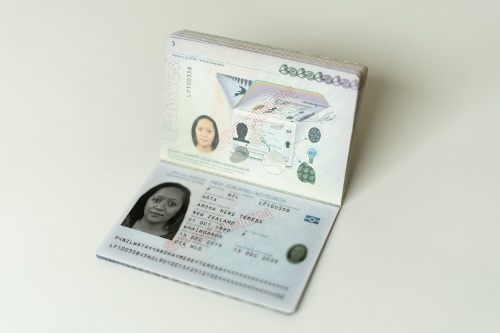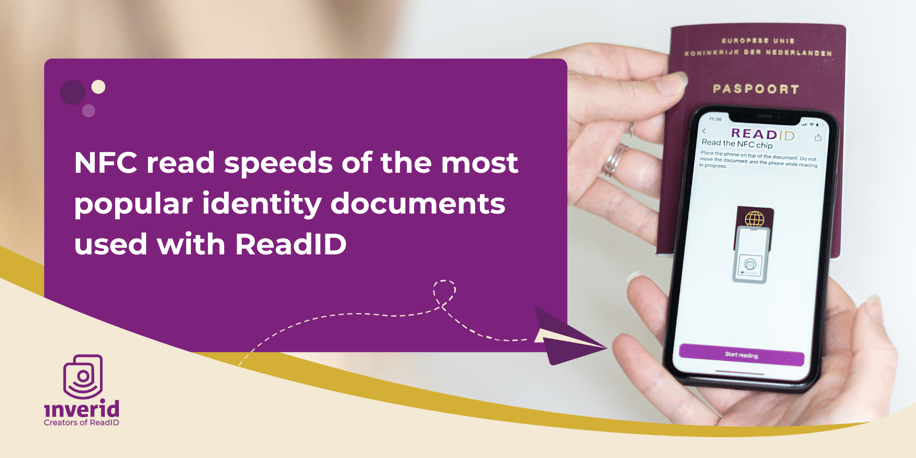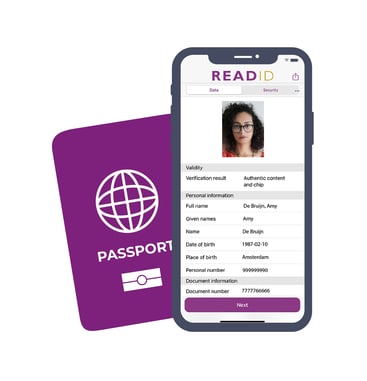ReadID Analytics is our internal database of meta information and anonymous data gathered from Inverid’s ReadID products, including customer SaaS (Software as a Service) transactions and ReadID Me transactions (which is a free app for personal use). Inverid uses this data to measure the performance of our products without storing personal data from the identity document. For example, Analytics will not have the individual’s date of birth, only whether a date of birth was present in the chip. In our ReadID Analytics article series, we analyse this data to highlight interesting trends and statistics of NFC-first identity verification.
In this instalment of ReadID Analytics, we will analyse the speed at which different kinds of identity documents can be read by Near Field Communication (NFC) technology.
Types of Identity Documents
The electronic identity documents we are referring to are those that comply to the International Civil Aviation Organisation (ICAO) Doc 9303 standards. ICAO is governed by the United Nations and aims to standardise identity and travel documents for universal use and acceptance around the world. One important aspect of this standardisation is that document types are represented by individual letter codes in their NFC chip, such as ‘I’ for identity card or ‘P’ for ePassport. These codes are not standardised across issuing states. An identity card may be defined by codes such as ‘I’, ‘ID’, ‘IR’ etc. Most issuing organisations do not publish the definitions of these document codes.
Some of the most popular document codes found in 2023 ReadID transaction data are ‘P’, ‘I’, ‘IR’, and ‘PE’. The most documents read are passports, identity cards, and residence permits. Electronic driving licenses are also read by ReadID, but they are a small amount of the total documents verified.
Most popular identity document issuers
Some examples of the observed issuing states used with ReadID, in no particular order, are
- Denmark
- Lithuania
- UK
- Latvia
- Norway
- Romania
- Netherlands
- Poland
- Ukraine
- Italy
- South Korea
- Sweden
- Switzerland
These issuing countries make up the bulk of the data analysed to write this article.
 Document reading speeds
Document reading speeds
The average time to successfully complete a read of a document’s NFC chip in our data is approximately 7.5 seconds. Despite the content within NFC chips being standardised by ICAO, there are notable differences in their speed/performance when in use with ReadID. We will highlight some of the most interesting differences to give an idea of their scope.
The average time to successfully complete a read of an identity document's chip with ReadID is 7.5 seconds.
Data analysis reveals that documents with the code ‘P’ or ‘PE’ (assumed to be passports) take less time to complete an NFC chip read than ID cards, between approx. 6-7 seconds. Documents with codes ‘I’, ‘ID’, and ‘IB’ (assumed to be ID cards) are among the slowest NFC read times in both customer and personal app transactions, between approx. 8-9 seconds.
In addition to these findings, we can see that NFC chip read speeds do vary between countries as well as by document type. For example, documents from South Korea average at approx. 3 seconds read time, compared to Switzerland’s approx. 7 seconds. Countries such as Malta and Monaco have read times between approx. 5-7 seconds. Of course, the sample size for these identity documents is smaller than that of larger European countries that are home to the majority of ReadID customers, where there are millions of transactions to draw an average figure from rather than hundreds or thousands. Interestingly, one of the fastest documents read with ReadID are those from the Holy See (or Vatican City). This is difficult to verify with complete certainty due to the very small sample size, but interesting nonetheless. To learn more about some of the rarer passports used with ReadID, view our rare passports used with ReadID analytics series article.
Thanks to ICAO standards and the rapidly improving capabilities of modern-day smartphones, a user can safely and remotely verify their identity from anywhere in the world using NFC technology in just seconds. Not only is remote identity verification using NFC fast, but it is also a user friendly 2 step process of scanning a photo page and placing a document against a smartphone. ReadID Analytics data highlights that although speeds may differ per document, the process is easy to understand for millions of users around the world every year, who successfully complete their identity verification in less than a minute.










